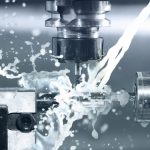Researcher in Residence: Best of both worlds, Artificial Intelligence and scientific computing

In the dynamic realm of Additive Manufacturing (AM), the quest for quality control persists as a formidable challenge, casting a shadow over the resilience of the manufacturing sector. Balancing the need for precision with the demands of mass production presents a delicate balancing act, where traditional offline inspection methods fall short, and online Artificial Intelligence (AI) solutions offer promise but lack consistency in detecting defects. Here’s where the University of Edinburgh’s Nick Polydorides and the National Manufacturing Institute Scotland (NMIS) come in.
Enterprising strides in Scientific Machine Learning now offer a compelling solution, bridging the gap between offline inspection and online AI in a computationally efficient manner. Harnessing these advancements, this project endeavours to elevate Artificial Intelligence performance and reliability by infusing physics and application specific modules into the data processing pipeline, to enhance defect detection and classification.
The project has a bold hypothesis: by integrating compact models of optical spectrum attenuation into a data-driven machine learning framework, we can capture the dynamics of the sintering and melting processes that govern the Laser Powder Bed Fusion (LPBF) process to make inferences about the quality and integrity of the manufactured parts. Leveraging breakthroughs in laser attenuation and scattering within gas and particulate plumes, and new advances in neural architectures we aim to deliver a groundbreaking approach for detecting printing anomalies from time-series optical and LPBF operational data.
“Working closely with the National Manufacturing Institute of Scotland, we are both gaining valuable insights and resources to create a cutting-edge diagnostic tool that will improve the accuracy and reliability of powder bed fusion additive manufacturing,” Nick said.
In a pioneering feat, the project will deploy algorithmic randomisation to expedite the online computations, effectively reducing its complexity and making it practical for seamless integration into the AM process. By developing diagnostics that are not only trustworthy but also intuitive for operators to interpret, the objective is to empower the industry with actionable insights into predicted faults, bolstering confidence in the manufacturing process.
Through the convergence of AI and Scientific Machine Learning, Nick envisions a future where additive manufacturing emerges as a beacon of reliability and innovation, driving transformative change in the manufacturing landscape.



